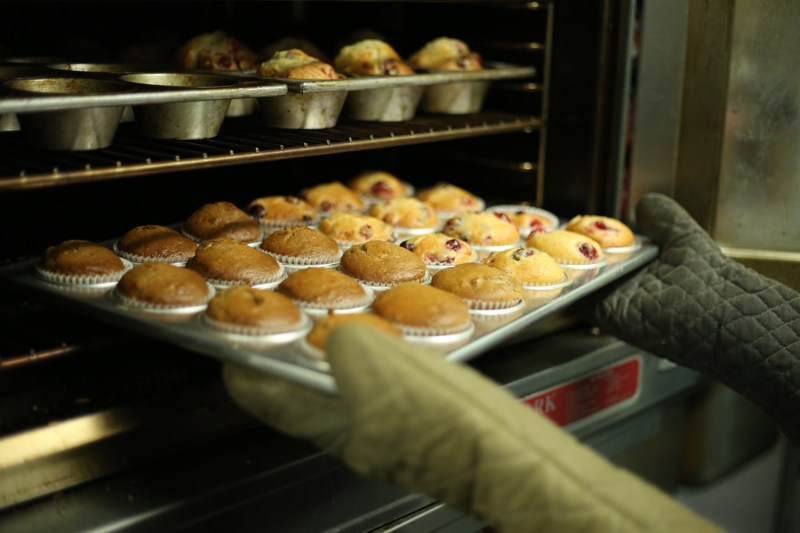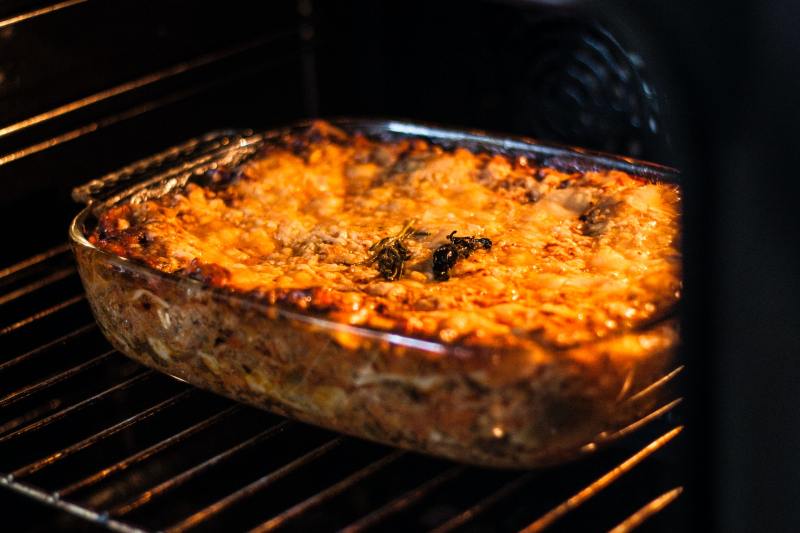Photographers often tell novices just getting into the hobby that the best camera is the one they already have. It’s rarely true from a literal standpoint. The point is to hone your craft with the gear you own before dropping hundreds or thousands of dollars on flashy new equipment. Working in the kitchen is no different.
For example, a fork can usually stand in for a whisk and aluminum foil works just fine in place of parchment paper if it’s all you have. But, there’s a scientific reason behind most specialty kitchen gear. Technically, a whisk aerates and blends better than a fork, and parchment paper really does make a difference with certain types of cooking. Such is the case when baking with metal pans vs. glass dishes.
There really is a difference — and a noticeable one at that — between the two. Each works best at certain temperatures and for certain types of food. If you’re ready to elevate your baking game, it helps to understand “metal versus glass” and which is best for baking.

Understanding Metal Baking Pans
Metal is a fantastic conductor, much more so than glass. Without getting too scientific, metal heats up faster and cools more quickly than glass. It can also withstand higher temperatures than glass. That makes it the go-to option for nice, even browning at higher heat and for dishes where bake times are short (think biscuits or cookies) and you want the pan to cool off quickly after removing it from the oven.
It’s important to note that the color of your metal bakeware matters too. That might seem silly, but dark pans absorb heat much faster than lighter ones. In most cases, you’ll want to shy away from dark metal bakeware entirely as it can cause baked goods to cook too quickly and brown too fast. In the worst-case scenario, the result is dry, overdone cookies, cakes, etc. The same is true of pans with a matte or dull finish. Shiny and light-colored pans, on the other hand, retain less heat and cook slowly and evenly. That’s why many professional chefs opt for aluminum bakeware for the best, most predictable results.
One important note is that metal reacts with acidic foods. Berry-flavored desserts like cobblers or fruit squares (without a bottom crust) can interact with metal bakeware during the cooking process. This results in discolored fruits with a weird, metallic flavor. Over time, cooking high-acid foods can also ruin the metal. For these reasons, it’s best to bake these types of desserts in glass baking dishes.
When to Use a Metal Baking Pan
There are exceptions. But, as a general rule, the most common baked goods do best in metal. These include:
- Cakes
- Brownies
- Cookies and cookie bars
- Muffins
- Scones
- Biscuits

Understanding Glass Baking Dishes
The most important difference between metal and glass pans is that glass heats up slower and retains that heat for far longer. Fresh out of the oven, metal pans cool quickly, while glass can stay warm, even hot, for an hour or more. In glass, sweet treats often brown on the bottom and sides too quickly. For that reason, most chefs recommend lowering the temperature of your oven by 25 degrees when baking cakes, brownies, and the like in glass.
That long heat retention isn’t ideal for common baked goods when you want the baking process to stop as soon as your dessert is out of the oven. For dishes that cook at a moderate temperature for longer or gooey desserts (like fudgy pudding cake or bread pudding) that you want to keep hot on your dining table, glass is usually a better option.
Lastly, unlike metal, glass does not react with acid. So, for berry desserts, citrus-based dishes, pasta, casseroles, or anything with a tomato base, glass is your man.
When to Use a Glass Baking Dish
These types of deserts generally do better in glass:
- Berry-flavored desserts or anything highly acidic. Glass won’t react with the acid.
- Baked, layered desserts like bread pudding and sweet casseroles. Glass highlights the layers and will stay warmer longer for serving purposes.
- Pies. Glass makes it easy to lift up the dish and peek at your crust to confirm that it’s done.
Which Is Better for Baking: Metal or Glass Pans?
Since this post is about baking (rather than cooking), and it’s our professional duty to pick a favorite, we have to give metal pans the win here. Sweet treats like cakes and brownies brown better in metal pans, and the outside finishes before the inside, which is almost always a good thing. From an aesthetic standpoint, we also like the angular edges you get with a metal pan which, in our humble opinion, make for more visually appealing desserts. In the end, however, as with all of life’s most complex questions, the best answer is: It depends.
If there’s one tip to take away, it’s to check your recipe. Anytime metal is best, most recipes usually call for a “pan” or “tin.” If a recipe mentions a “dish,” however, it’s best to grab the glass.


